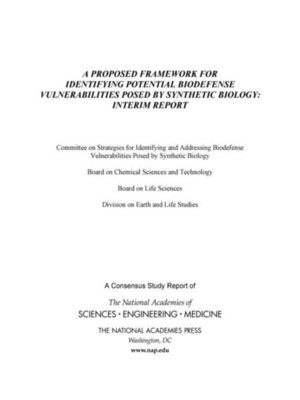A Proposed Framework for Identifying Potential Biodefense Vulnerabilities Posed by Synthetic Biology
ebook ∣ Interim Report
By National Academies of Sciences, Engineering, and Medicine

Sign up to save your library
With an OverDrive account, you can save your favorite libraries for at-a-glance information about availability. Find out more about OverDrive accounts.
Find this title in Libby, the library reading app by OverDrive.



Search for a digital library with this title
Title found at these libraries:
| Library Name | Distance |
|---|---|
| Loading... |
Building on an increasingly sophisticated understanding of naturally occurring biological processes, researchers have developed technologies to predictably modify or create organisms or biological components. This research, known collectively as synthetic biology, is being pursued for a variety of purposes, from reducing the burden of disease to improving agricultural yields to remediating pollution. While synthetic biology is being pursued primarily for beneficial and legitimate purposes, it is possible to imagine malicious uses that could threaten human health or military readiness and performance. Making informed decisions about how to address such concerns requires a comprehensive, realistic assessment. To this end, the U.S. Department of Defense, working with other agencies involved in biodefense, asked the National Academies of Sciences, Engineering, and Medicine to develop a framework to guide an assessment of the security concerns related to advances in synthetic biology, to assess the level of concern warranted for various advances and identify areas of vulnerability, and to prioritize options to address these vulnerabilities.
This interim report proposes a framework for identifying and prioritizing potential areas of concern associated with synthetic biology—a tool to aid the consideration of concerns related to synthetic biology. The framework describes categories of synthetic biology technologies and applications—such as genome editing, directed evolution, and automated biological design—and provides a set of initial questions to guide the assessment of concern related to these technologies and applications.







